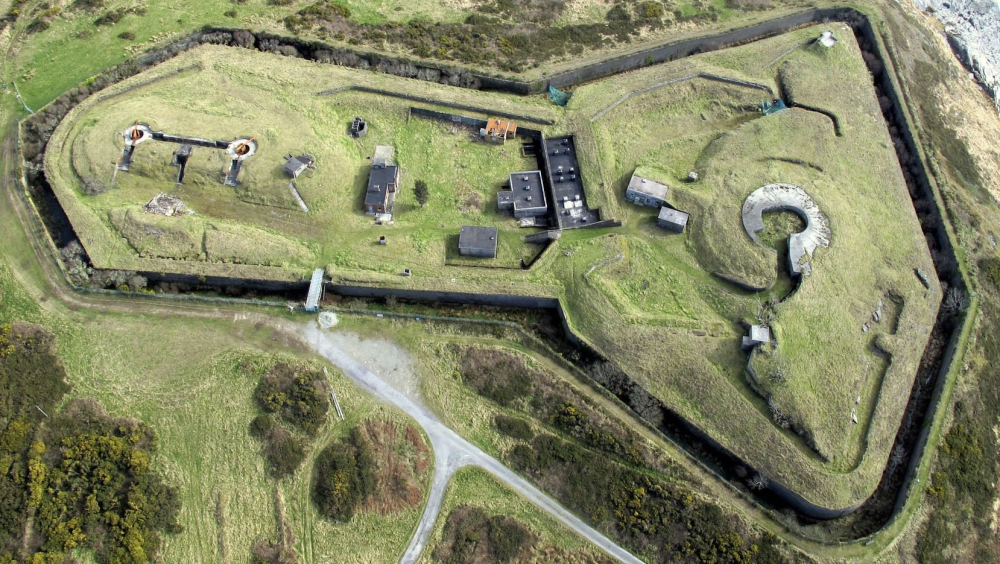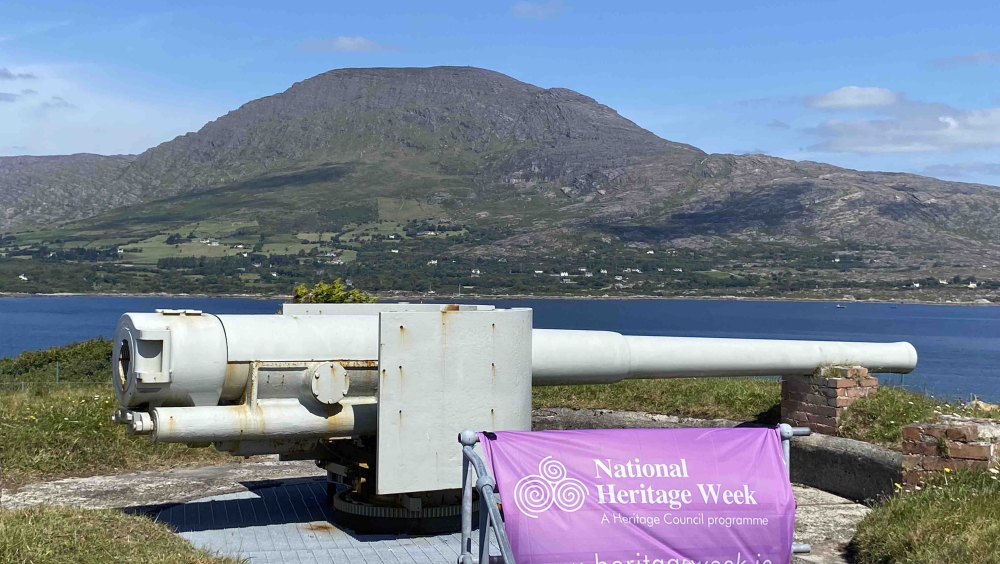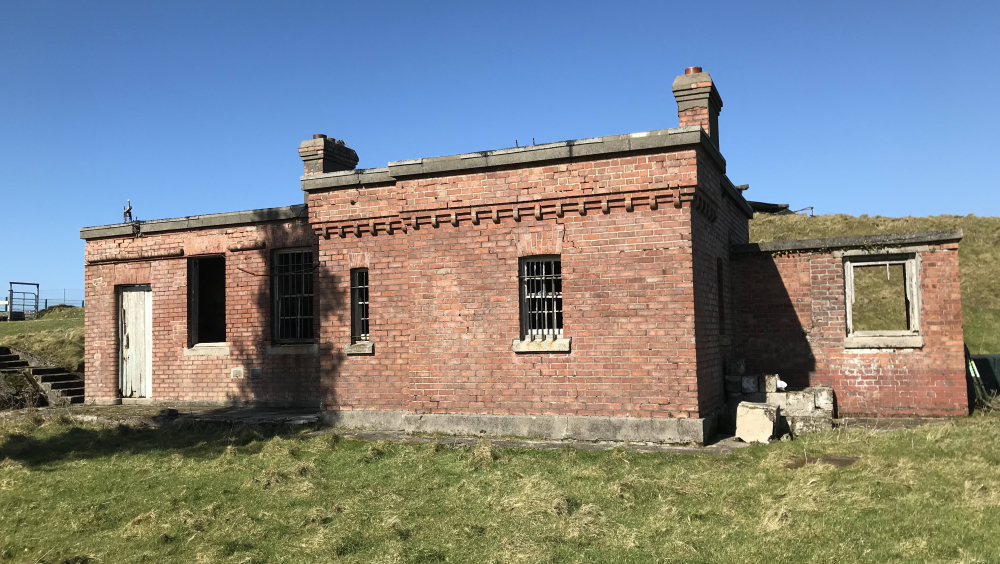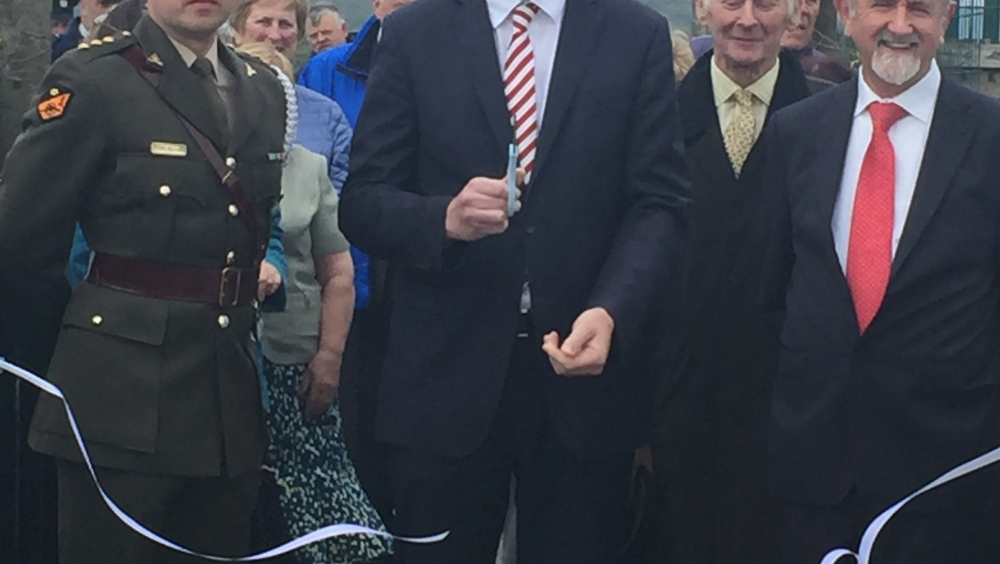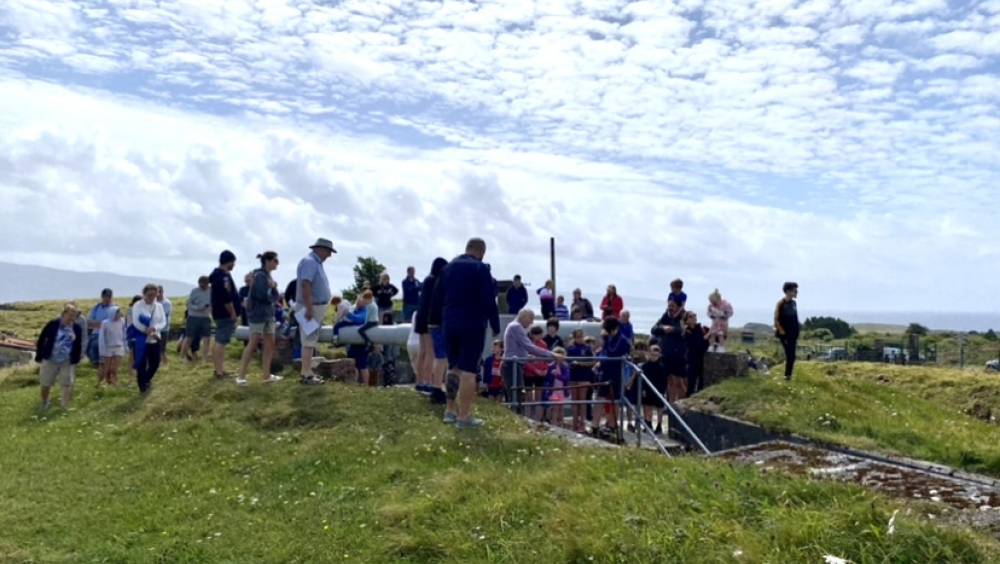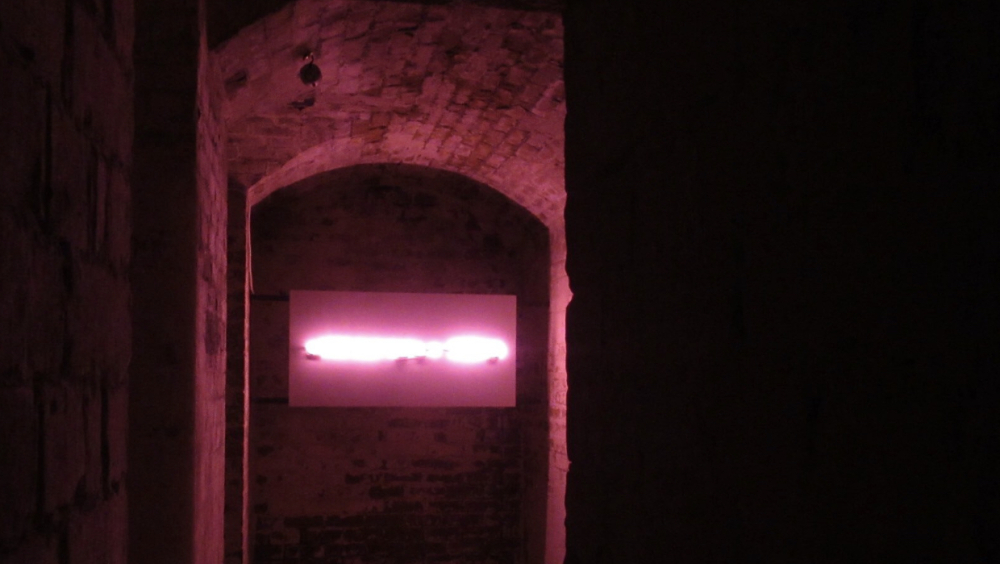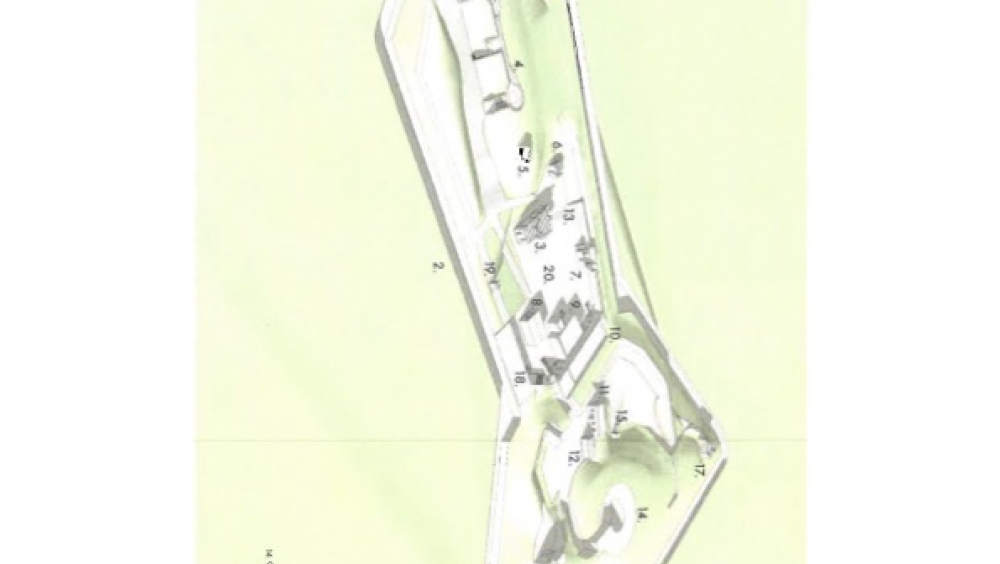Lonehort Battery, Bere Island Co Cork - the restoration of a former WW1 gun battery.
Lonehort Battery, is the largest of seven gun batteries on Bere Island, Co Cork, Ireland. The battery and other fortifications were constructed by the British Admiralty in the early 1900s to protect their fleet which lay at anchor in Berehaven Harbour, the deep water harbour located between Bere Island and the mainland. Berehaven Harbour has long been regarded as a strategic location with the British having a particular interest in the island, viewing it as an important link in the chain of defending their empire.
Lonehort Battery is the largest military structure on Bere Island. It is located at the eastern end of the island, and is surrounded by a dry moat 10 metres in depth. The battery contains two large coastal artillery guns, a guard house, engine room and parade ground, and has a network of underground tunnels and gunpowder stores.
In 2003, the island community development group, Bere Island Projects Group, with support from The Heritage Council and Cork County Council launched the Bere Island Conservation Plan, a blueprint to protect the island’s community, landscape and it’s heritage. One of the key recommendations of the Conservation Plan was to preserve the island’s military fortifications, with particular reference to restoring Lonehort Battery as a visitor attraction.
Bere Island Projects Group have obtained a licence from the owners of Lonehort Battery, the Irish Department of Defence to restore and develop the battery as a multi-use site which includes preserving a unique WW1 structure which played a vital part in Bere Island's military heritage and also had a key role in European military history. Since 2019, the northern section of Lonehort Battery has been open for guided tours, hosted commemorations relating to the island’s military heritage, and served as a venue for arts exhibitions.
Bere Island has aptly been described as an open air museum. The island is 10km long and 3km at its widest point and lies at the entrance to Bantry Bay in West Cork. Bere Island is perhaps best known for its military fortifications and its role as a strategic British Admiralty base during World War One. The island is said to be one of the best preserved military landscapes in Ireland.
The first known military presence on Bere Island was in 1602 when during the Siege of Dunboy, British forces under Sir George Carew, landed on the eastern end of the island. In December 1796, under the command of Theobald Wolfetone, a French Armada made an attempted invasion via Bantry Bay. The invasion was thwarted by ferocious winter storms, which many of the ships either retreating or floundering in the bay. Following this attempted invasion, and realising the strategic location of Bere Island as an entry point to Ireland, and eventually England for foreign invading forces, the British constructed four Martello Towers on Bere Island, two of which still remain. In March 1898 the British War Department began the most extensive period of fortifying Bere Island, building seven gun batteries, barracks, stores and recreation facilities.
Construction began on Lonehort Battery in March 1898. Overseen by the Royal Engineers regiment, over 500 local men were also employed in the construction, mainly in the excavation of the deep moat and tunnel network within the battery. In October 1898 the Times reported that the British Government was ‘at present engaged in turning Bere Island into a second Gibraltar.” The battery and moat were complete by 1899 and by 1903 two large 6” coastal artillery guns were in place, a larger 9” gun was installed in 1910. The guns were brought by sea from Cork to Bere Island, and then transported by horse and cart from the pier to the battery over 2km away.
The primary aim of the gun batteries was to protect the British fleet as they lay at anchor in Berehaven Harbour. These were steam powered ships, and when undergoing routine maintenance, they were effectively powerless. In 1917 the US Navy also used the sheltered waters off Bere Island as a safe anchorage whilst protecting the Atlantic convoys during World War One.
Gun crews operating the large coastal artillery guns at Lonehort Battery were on constant alert, scanning the wide expanse of Bantry Bay for enemy ships. Following the signing of the Anglo Irish Treaty of 1922, Bere Island and its fortifications remained under British control as one of Ireland’s three deep-water Treaty Ports, which British Prime Minister Winston Churchill insisted remained under British control. Bere Island was eventually handed back to the Irish Government in 1938, though not without a last minute standoff by Churchill to demand that the guns at Berehaven remained under British control, particularly with the spectre of another war looming in Europe.
During the Irish War of Independence, when an internment camp was in operation on Bere Island, one key internee was kept in solitary confinement at Lonehort Battery.
In the years since 1938, Lonehort Battery remained a forgotten outpost of over three hundred years of a British presence on Bere Island. Bere Island Projects Group are now resorting this key piece of the island’s military architecture as a visitor attraction and also a site to be used and enjoyed by the island community.
Lonehort Battery is a protected structure listed in the Record of Protected Structures (RPS) as ID:01230. Since obtaining a licence from the Department of Defence to restore the site, Bere Island Projects Group have undertaken a detailed feasibility study and heritage interpretation study of Lonehort Battery and engaged structural engineers to undertake a full condition survey of each structure on the site. A comprehensive ecological assessment of the site was also undertaken, along with a Bat fauna study.
Conservation architects recommended restoring the battery in three phases. Phase one, the northern section of the battery which contains the two remaining coastal artillery guns and underground stores has now been restored, and has been open for guided tours since 2019. Work is underway on restoring the remainder of the site.
When fully restored Lonehort Battery will serve to increase visitors to Bere Island, benefitting the local economy and will lead to the creation of jobs, both directly associated with the battery site and in local tourism businesses. Bere Island is located on the Wild Atlantic Way, one of the longest defined coastal routes in the world, and Lonehort Battery has been identified as a key destination of Failte Ireland’s West Cork Destination and Experience Development Plan.
Bere Islands Projects Group are also developing Lonehort Battery with a view to it being used and enjoyed by the island community. Plans for the second phase of development including restoring the former parade ground as a green space to be enjoyed by the local community and island groups such as the Active Retirement Group, and island school children.
During National Heritage Week, Bere Island Projects Group hold guided tours of Lonehort Battery aimed specifically at children, in 2022, our children’s event for Heritage Week was shortlisted by the Heritage Council for the National Heritage Week Awards.
When fully restored Bere Island Projects Group are confident that Lonehort Battery will serve as a key visitor attraction not just for Bere Island, but on a national level.
Lonehort Battery is one of the few remaining pieces of British World War One architecture in existence. In the UK many similar gun batteries were upgraded and adapted for use during World War Two. Bere Island Projects Group aim to continue their work in restoring this piece of military architecture which played a pivotal role, not just in the history of Bere Island, but in European history. At 12.00pm on 26th September 1938 the Union Jack was lowered over Fort Berehaven, Bere Island, at 12.01pm the Irish Tricolour was raised over the fort, thus securing Ireland’s neutrality which avoided the country's direct involvement in World War Two.
The history of Bere Island can be said to be a history of Ireland, incorporated in an island of just under 2000 hectares.
